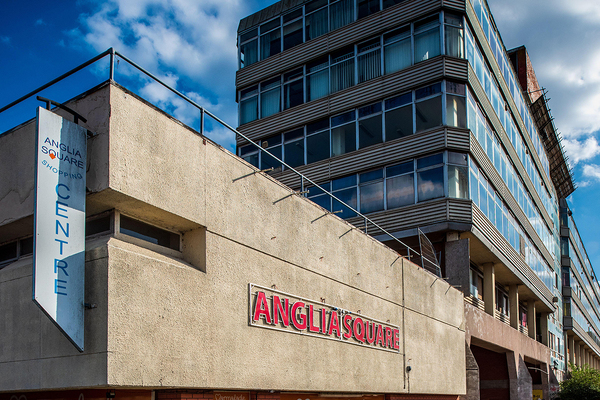You are viewing 1 of your 1 free articles
Will Labour lay down the law on housing targets?
The government is pledging to deliver millions of homes, but can it make that happen, asks Inside Housing columnist Jules Birch
Housing targets concentrate minds in the government and drive delivery, but they also come with trade-offs attached.
As Labour goes into its first party conference since gaining power, much of the attention will be on announcements that fill in the blanks in how it is going to achieve its manifesto target of 1.5 million new homes in this parliament.
Superficially unambitious – it’s no more than the Conservatives’ 2019 manifesto promise of 300,000 new homes by the mid-2020s. It is actually a huge stretch, with ministers expecting no more than 200,000 net additional dwellings in this financial year as a starting point.
That will leave a growing shortfall to be made up in the later years of the parliament and could require more like 400,000 new homes a year to be built by the late 2020s.
Having a target in place is important because it drives activity within the government, especially when it is backed by the rise of Labour yimbyism.
But a target does not guarantee delivery in itself, even with the magic added ingredient of planning reform.
A recent report from the Resolution Foundation argues that the government can set targets and take a more muscular approach with local authorities when it comes to local plans and planning permissions, but it will still be relying very heavily on the private sector to deliver its ambitions.
An optimistic scenario might be that a boost for housebuilding in general is automatically a boost for affordable housebuilding delivered via Section 106. A more realistic one would point to the current breakdown of the Section 106 system on sites around the country.
Housing associations are understandably focused on investment in their existing stock, but house builders see a lack of buyers for affordable homes delivered under Section 106 as the biggest current obstacle to getting on to site. One solution might be to allow them to sell the homes on the open market, which would boost overall housebuilding but cut right across the original aim of the policy.
“Housing associations are understandably focused on investment in their existing stock, but house builders see a lack of buyers for affordable homes delivered under Section 106 as the biggest current obstacle to getting on to site”
As the report argues, England has never achieved 300,000 new homes a year without a substantial contribution from the public sector. It adds that “increased direct public investment” will be key to delivering both the 1.5 million homes target and the manifesto promise of “the biggest boost to social and affordable housing in a generation”.
That “biggest boost in a generation” implies matching the performance of the last Labour government in the 2000s. Under Tony Blair and Gordon Brown, it cut investment in its first term as it stuck to the Conservatives’ spending plans in its first two years, then ramped it up in terms two and three.
With the Treasury policing anything that smacks of a spending commitment, though, ministers have never really spelled out what that means in terms of numbers of social and affordable homes, or of cutting the number of families stuck in temporary accommodation.
The absence of hard targets for social and affordable homes in England is in marked contrast to longstanding ones elsewhere in the UK.
The Welsh and Scottish governments both set ambitious targets for affordable and social housing after they were elected in 2021 – both have found that setting the targets is the easy bit.
In Scotland, a £200m cut to this year’s affordable housing budget had already undermined progress towards the Scottish government’s target of 110,000 affordable homes by 2032 (with at least 77,000 of them for social rent).
In Wales, the Labour government promised to build 20,000 “new low-carbon social homes for rent” by March 2026.
To put that in context, 20,000 is the equivalent of 368,000 in England adjusting for population. At 73,600 a year, that’s 10,000 more than England’s affordable housing completions in 2022-23 and way ahead of the 9,600 of those that were for social rent.
However, a report from the financial watchdog Audit Wales earlier this month found that fewer than half of the 20,000 homes had been delivered by the end of 2023-24 – three years into the five-year target period. It concludes that the Welsh government would need an extra £580m to £740m in capital investment to meet the target, and even that would rely on schemes currently in the pipeline that are seen as risky.
“Targets may send an important signal and focus attention within the government, but they are always about choices, too”
In part, this highlights a big problem with targets: delivery tends to be backloaded towards the end of the target period rather than spread more efficiently from the start.
There are trade-offs inherent in targets, too. One obvious way to speed up deliver would be to spend more on acquiring existing homes rather than building new ones. This would get more people out of temporary accommodation more quickly.
However, unless it involved bringing long-term empty homes back into use, it would not expand the housing stock and overall supply. And the acquired homes would probably not be as low carbon as new ones.
Another trade-off would be to make the investment go further by building more homes for intermediate rent, but that would be in place of the social rent promised.
That’s the kind of choice that will be only too familiar to people in England, where output was maintained after deep cuts in investment in 2010 by a wholesale switch from social to ‘affordable’ rent.
Targets may send an important signal and focus attention within the government, but they are always about choices, too.
Jules Birch, columnist, Inside Housing












